Evaluating your business’s progress is an important step that reveals the results of your endeavors. This becomes possible through a gap analysis example, which is the right tool to complete this essential step. With the gap analysis sample, you get to understand where your company stands, in relation to where you had aimed to be.
In this article, you will understand what this tool is and how to use it through numerous examples. This way, you will be able to create a gap analysis example for your case. Let’s get started!
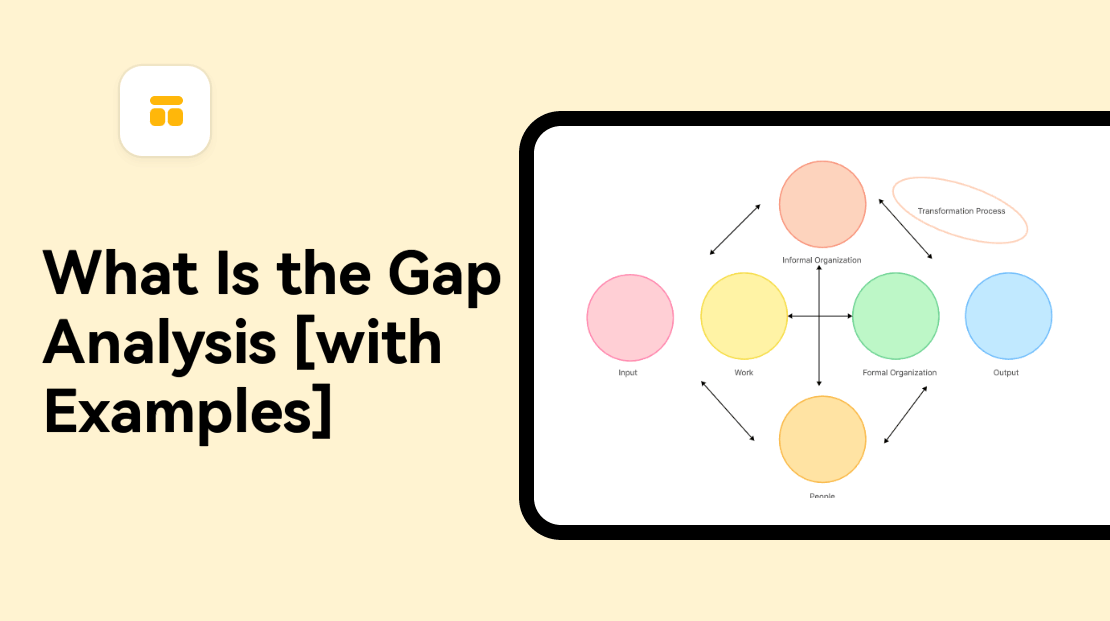
What Is the Gap Analysis
The first step to understanding a gap analysis sample is to discover the main goal of this tool. As its name suggests, this analysis creates a comparison between expectations and reality. This practically means that it will highlight how different the results are from what you have predicted. Keeping this in mind, you can use your gap analysis example to make all the necessary changes and bring your business closer to what you have envisioned.
Types of Gap Analysis
The truth is that this is a versatile tool that can be adapted to any type of element you wish to evaluate. Therefore, you will find a gap analysis sample for many different cases. The most significant types of gap analysis are the following:
- Compliance gap analysis – this gap analysis evaluates whether your company adheres to all laws and regulations and whether you need to make more efforts to meet the requirements.
- Financial gap analysis – in thistype of gap analysis, you are comparing the financial status of your organization to the financial goals that you had set.
- Market gap analysis – in this case, you are examining what the consumers’ expectations and needs are. This way, you can identify gaps in the market that your product or service can satisfy.
- Performance gap analysis – this analysis looks into the overall performance of your organization and tries to showcase the areas that need improvement to maximize its efficiency. This is also referred to as the strategic gap analysis.
- Product gap analysis – this gap analysis sample evaluates the product and its functions to determine whether it satisfies customers’ needs.
- Technology gap analysis – through this gap analysis example, you evaluate the technology infrastructure of the organization and whether it’s enough to keep your company competitive.
- Skill gap analysis – in this particular analysis, you take a look at the skill sets of your existing employees. Through this, you can determine if they need further training.
Gap Analysis Tools
As it became obvious from the previous part, the scope of a gap analysis sample can vary. For this reason, you have the option of using several tools to conduct it, depending on the element you wish to examine. The most commonly used gap analysis tools are the SWOT and the PEST analysis, the McKinsey 7S framework, the fishbone diagram, and the Nadler-Tushman model.
- SWOT analysis – this tool examines the strengths, weaknesses, opportunities, and threats that your organization is facing. It is a versatile tool that can help you identify both internal and external factors that can lead to success.
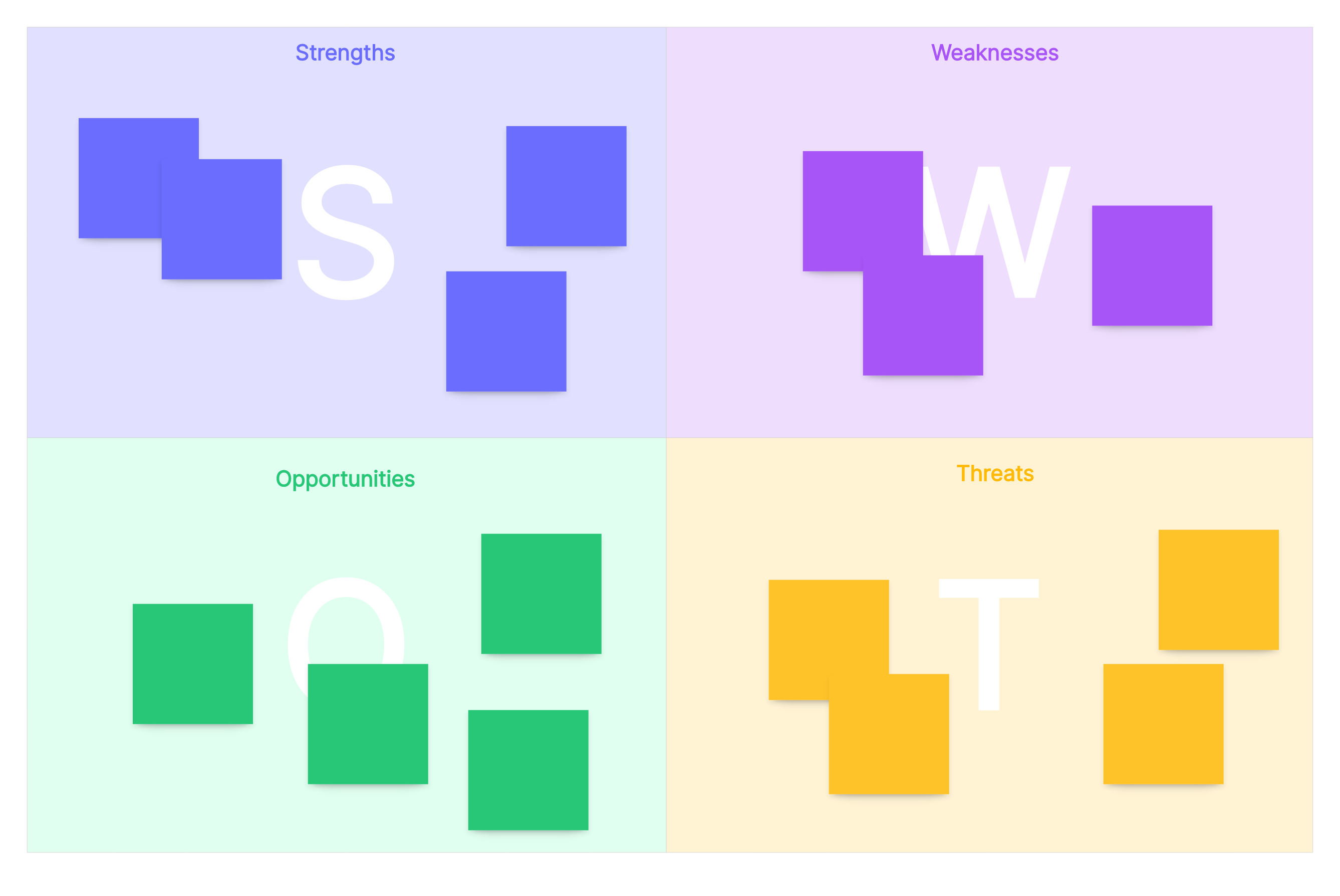
- PEST/PESTLE analysis – this tool stands for political, economic, sociological, technological, legal, and environmental. It focuses on all these external factors that have an immediate impact on your company.

- McKinsey 7S Framework – the seven elements of this framework are strategy, structure, systems, staff, style, skills, and shared values. Evaluating all these anthropocentric elements, you highlight the gaps and bring your team on the same page.
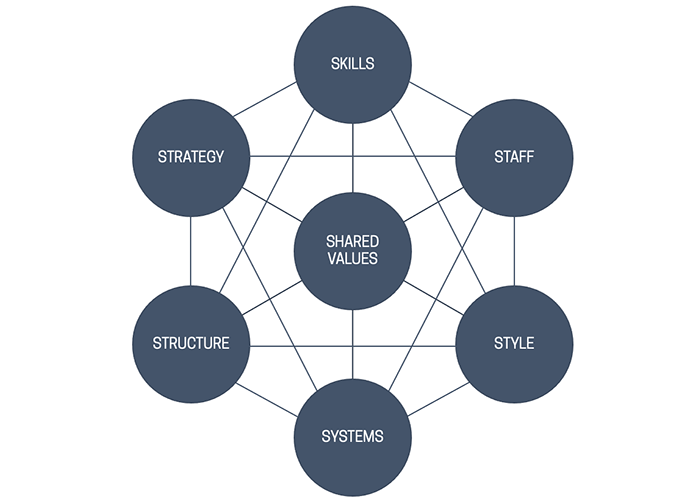
- Fishbone diagram – this tool is ideal for identifying the causes of a root problem. That’s why you will also find it as the cause-and-effect or Ishikawa diagram.
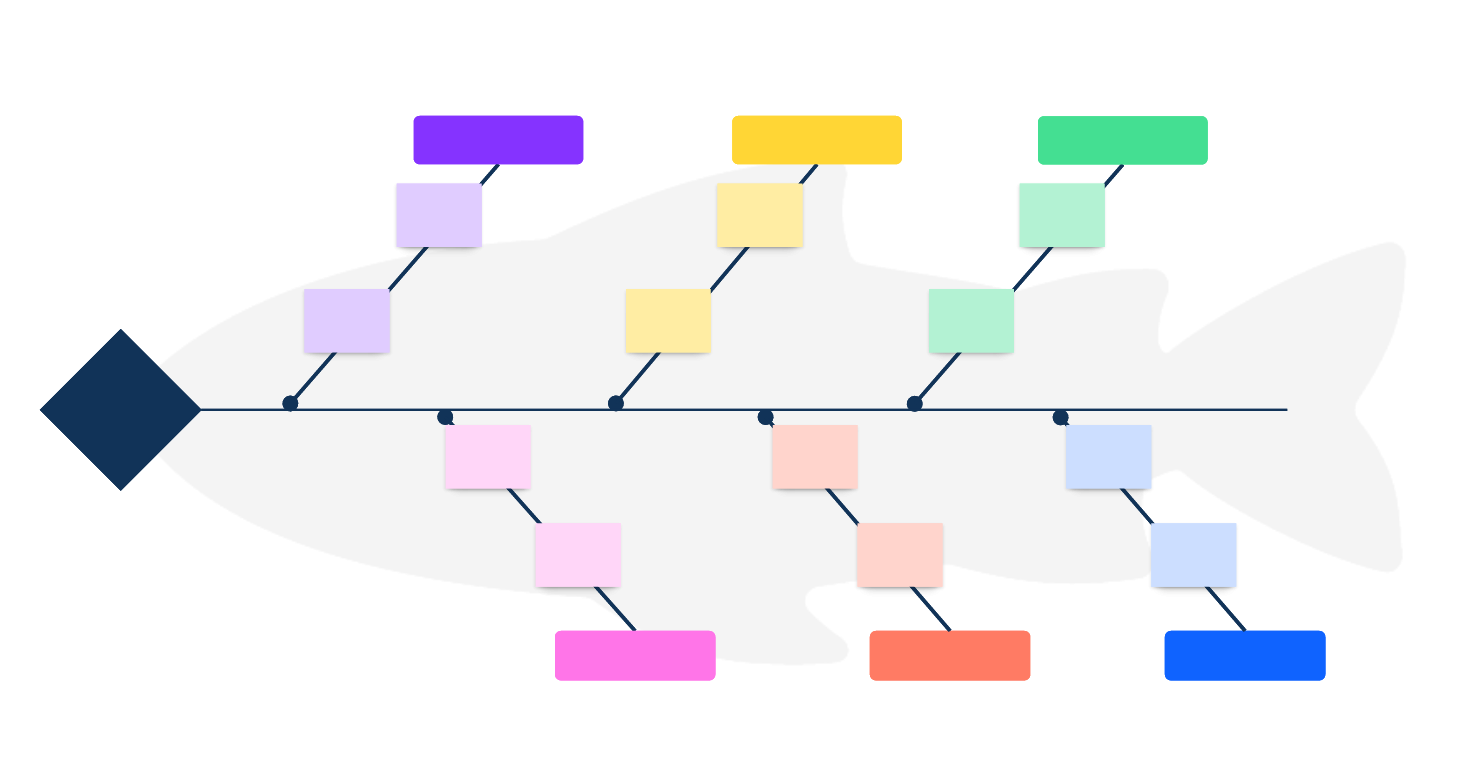
- Nadler-Tushman Model – according to this model, every process within the organization affects all other processes. Therefore, identifying the gaps between them can boost the company’s overall performance.
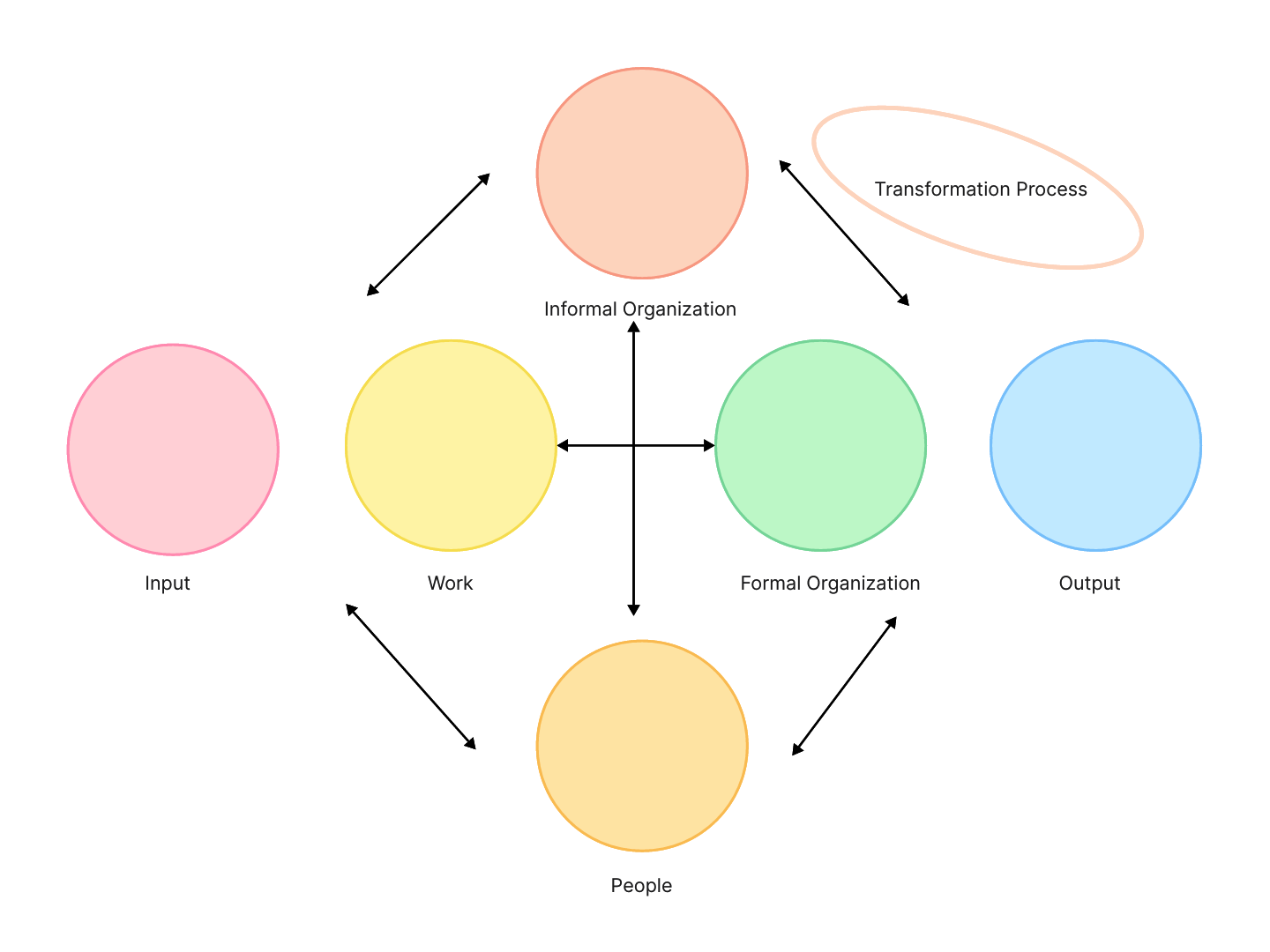
10 Gap Analysis Examples
Gap Analysis Example 1 - SWOT Analysis
The first gap analysis example that we are going to examine uses the SWOT analysis tool. In this case, we are looking at a company that has become well known for a particular bag they have launched. In the diagram, it is easy to see that the brand needs to boost its other products as well so that it remains competitive against the numerous other brands that have emerged.
 Strengths
Strengths
- The brand’s bag is instantly recognizable,
- Consumers view the design as innovative.
Weaknesses
- The other products in the catalog aren’t that successful,
- There aren’t many variations in the successful bag.
Opportunities
- Introduce seasonal colors for the bag,
- Collaborate with an influencer to bring awareness to the other products.
Threats
- Competitors have started copying the bag’s design,
- Some consumers find the bag pricey.
Gap Analysis Example 2 - SWOT Analysis
The following gap analysis sample that we are going to see also takes advantage of the SWOT analysis diagram. In this case, the company is developing a delivery app. With the addition of a new function, they can fill a gap in the market and gain a competitive advantage.
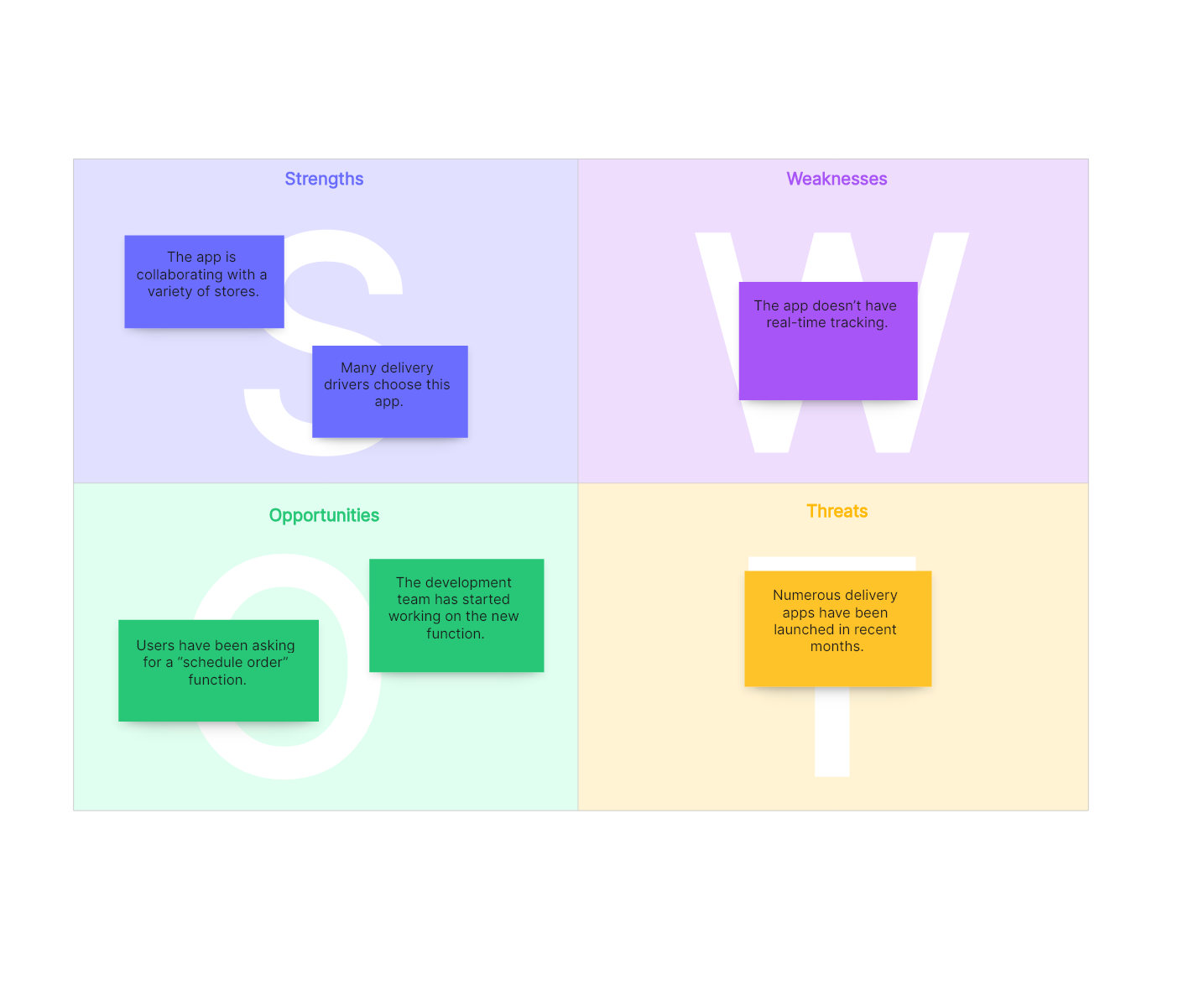
Strengths
- The app is collaborating with a variety of stores,
- Many delivery drivers choose this app.
Weaknesses
- The app doesn’t have real-time tracking.
Opportunities
- Users have been asking for a “schedule order” function,
- The development team has started working on the new function.
Threats
- Numerous delivery apps have been launched in recent months.
Gap Analysis Example 3 - PEST/PESTLE Analysis
In the next gap analysis example, we are using the PESTLE analysis to evaluate the external factors. In this case, we discover that the company can take advantage of a new policy, according to which the government will fund the firing of additional interns.
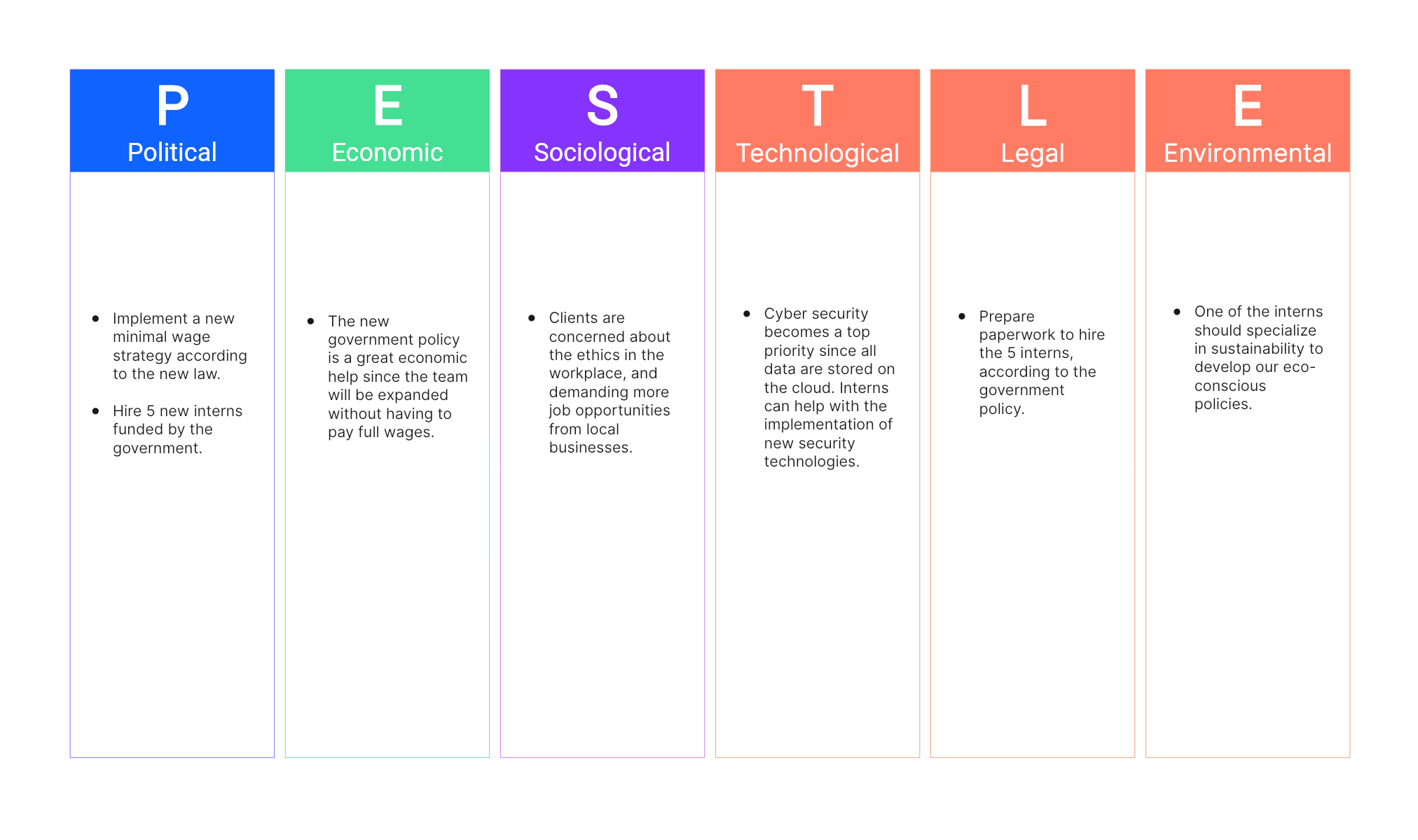 Political
Political
- Implement a new minimal wage strategy according to the new law,
- Hire 5 new interns funded by the government.
Economic
- The new government policy is a great economic help since the team will be expanded without having to pay full wages.
Sociological
- Clients are concerned about the ethics in the workplace, and demanding more job opportunities from local businesses.
Technological
- Cyber security becomes a top priority since all data are stored on the cloud. Interns can help with the implementation of new security technologies.
Legal
- Prepare paperwork to hire the 5 interns, according to the government policy.
Environmental
- One of the interns should specialize in sustainability to develop our eco-conscious policies.
Gap Analysis Example 4 - PEST/PESTLE Analysis
Similarly to the previous gap analysis sample, this example uses the PEST analysis. In this instance, the company realizes that they also need to develop an app to make shopping even easier for mobile users.
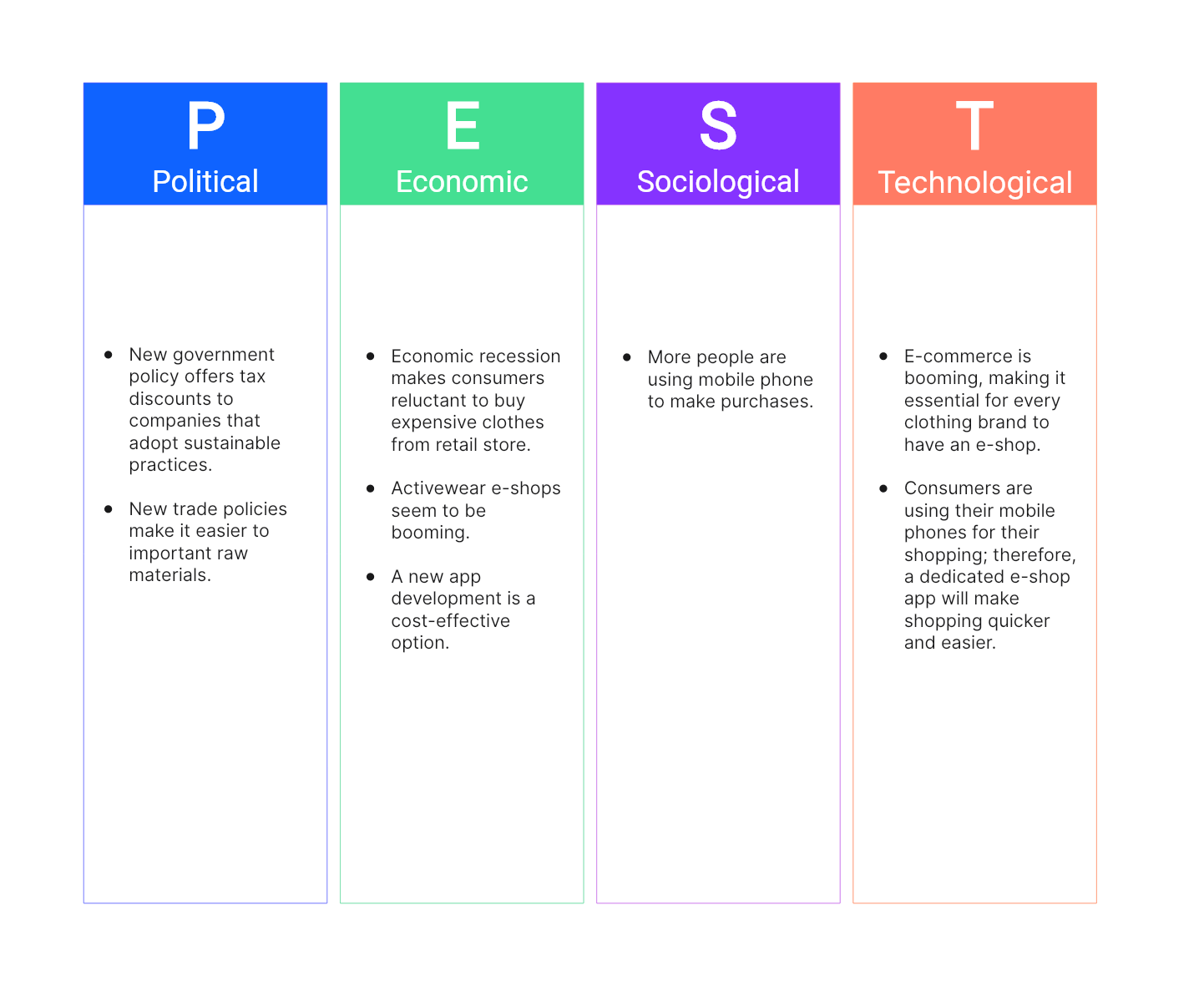 Political
Political
- New government policy offers tax discounts to companies that adopt sustainable practices,
- New trade policies make it easier to important raw materials.
Economic
- Economic recession makes consumers reluctant to buy expensive clothes from retail store,
- Activewear e-shops seem to be booming,
- A new app development is a cost-effective option.
Sociological
- More people are using mobile phone to make purchases.
Technological
- E-commerce is booming, making it essential for every clothing brand to have an e-shop.
- Consumers are using their mobile phones for their shopping; therefore, a dedicated e-shop app will make shopping quicker and easier.
Gap Analysis Example 5 - McKinsey 7S Framework
The next gap analysis example utilized the McKinsey 7S framework. In this case, we are examining an e-shop that wants to start importing products in addition to its in-house production line.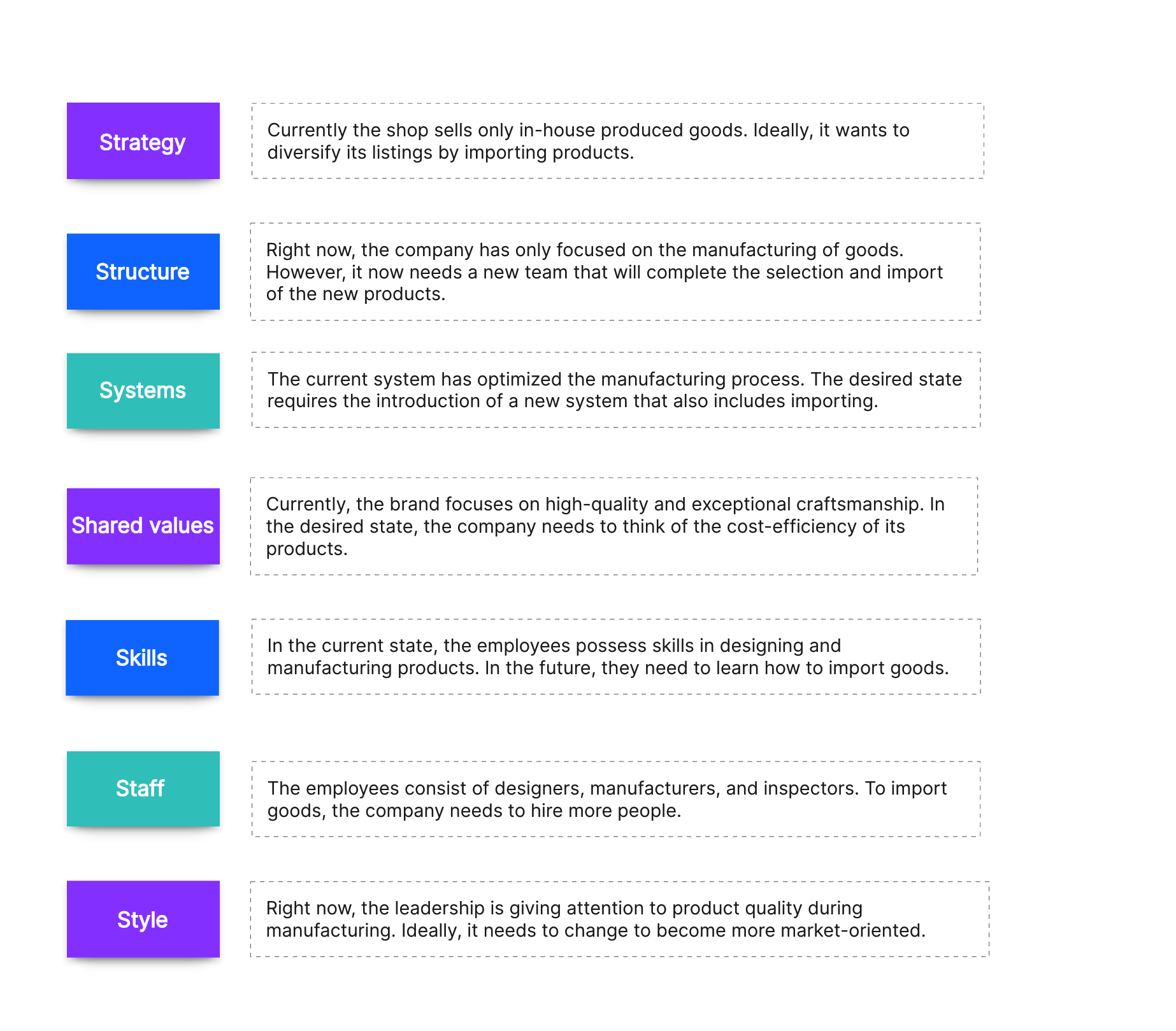
- Strategy: Currently the shop sells only in-house produced goods. Ideally, it wants to diversify its listings by importing products.
- Structure: Right now, the company has only focused on the manufacturing of goods. However, it now needs a new team that will complete the selection and import of the new products.
- System: The current system has optimized the manufacturing process. The desired state requires the introduction of a new system that also includes importing.
- Staff: The employees consist of designers, manufacturers, and inspectors. To import goods, the company needs to hire more people.
- Style: Right now, the leadership is giving attention to product quality during manufacturing. Ideally, it needs to change to become more market-oriented.
- Skills: In the current state, the employees possess skills in designing and manufacturing products. In the future, they need to learn how to import goods.
- Shared values: Currently, the brand focuses on high-quality and exceptional craftsmanship. In the desired state, the company needs to think of the cost-efficiency of its products.
Gap Analysis Example 6 - McKinsey 7S Framework
The following gap analysis sample that uses the McKinsey 7S framework is about a cinema that wants to expand its services by introducing premium experiences to the viewers. Therefore, the example will look like this: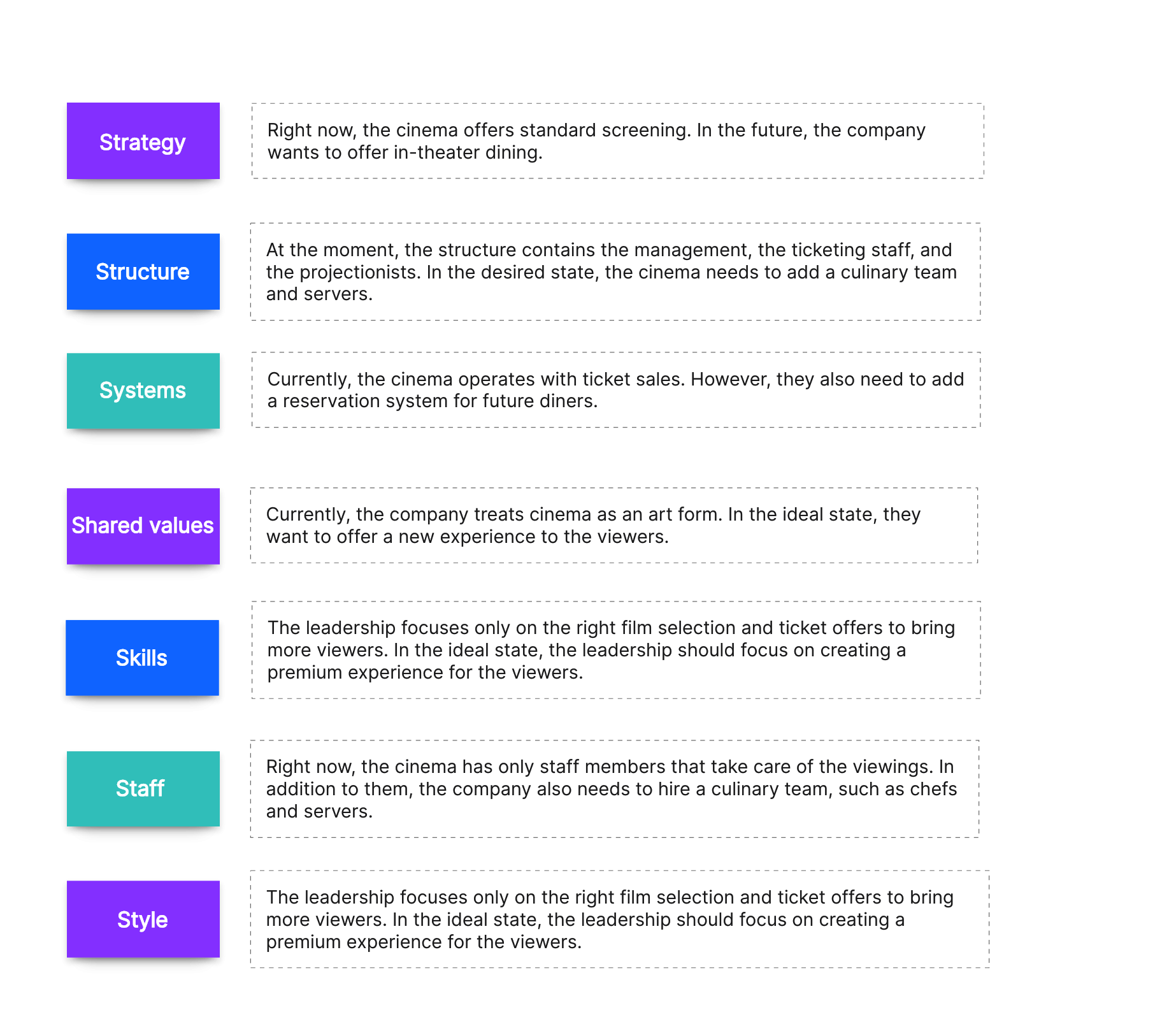
- Strategy: Right now, the cinema offers standard screening. In the future, the company wants to offer in-theater dining.
- Structure: At the moment, the structure contains the management, the ticketing staff, and the projectionists. In the desired state, the cinema needs to add a culinary team and servers.
- System: Currently, the cinema operates with ticket sales. However, they also need to add a reservation system for future diners.
- Staff: Right now, the cinema has only staff members that take care of the viewings. In addition to them, the company also needs to hire a culinary team, such as chefs and servers.
- Style: The leadership focuses only on the right film selection and ticket offers to bring more viewers. In the ideal state, the leadership should focus on creating a premium experience for the viewers.
- Skills: Right now, employees possess skills in customer service and film projecting. In the future, the company will need specialized staff that can prepare the dishes.
- Shared values: Currently, the company treats cinema as an art form. In the ideal state, they want to offer a new experience to the viewers.
Gap Analysis Example 7 - Fishbone Diagram
In the following gap analysis sample, we are using the fishbone diagram to find the root causes of the decreased customer satisfaction in a restaurant. In this diagram, we are able to dissect all causes that might impact the diners’ experience.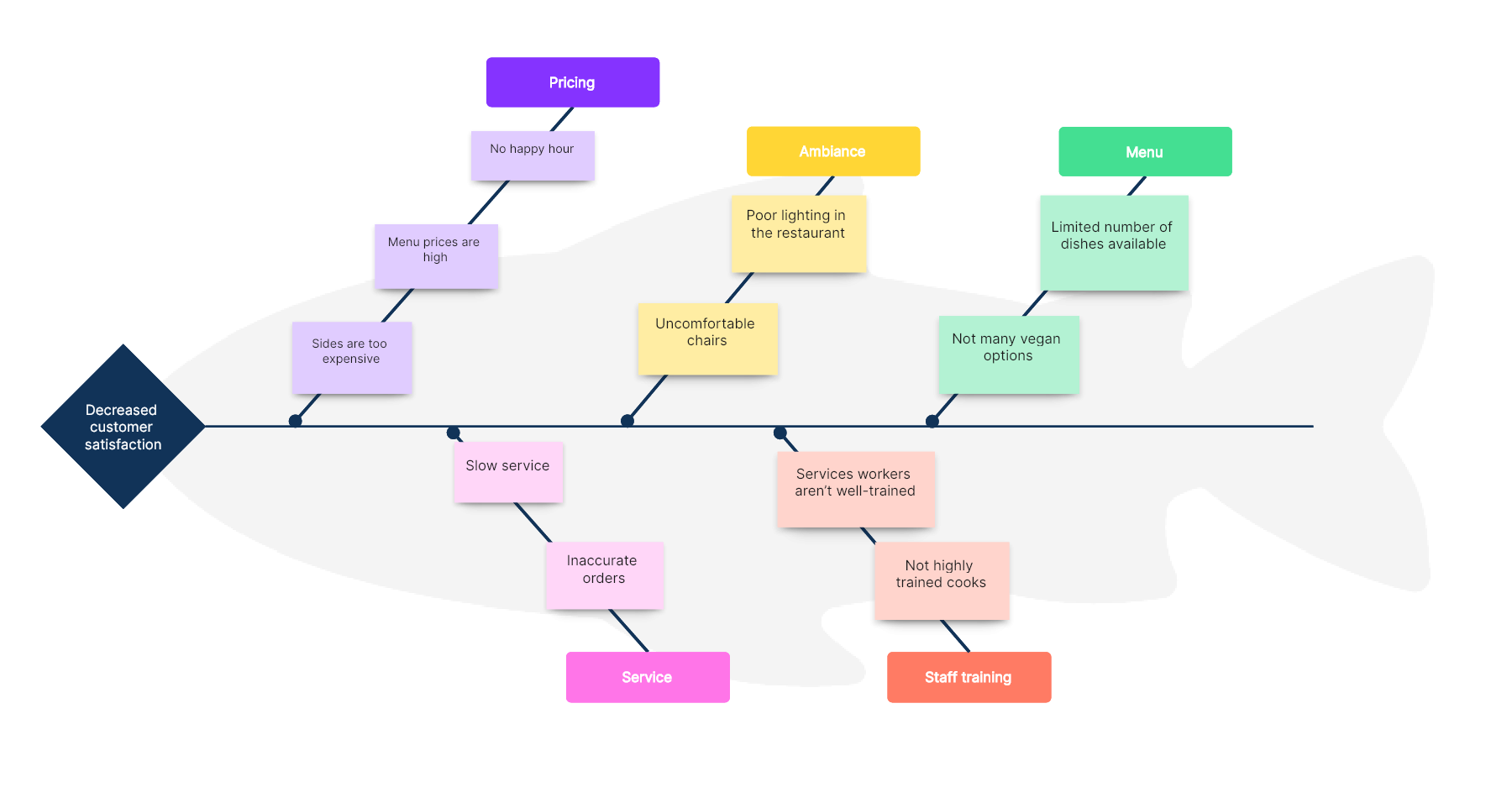
- Pricing
- Menu prices are high,
- Sides are too expensive,
- No happy hour.
- Ambiance
- Poor lighting in the restaurant,
- Uncomfortable chairs.
- Menu
- Limited number of dishes available,
- Not many vegan options.
- Service
- Inaccurate orders,
- Slow service.
- Staff training
- Not highly trained cooks,
- Services workers aren’t well-trained.
Gap Analysis Example 8 - Fishbone Diagram
Another gap analysis example that uses the fishbone diagram tries to uncover the causes for the decreased sales in a clothing e-shop. In the diagram, we are examining all possible causes from the pricing to the e-shop’s web design.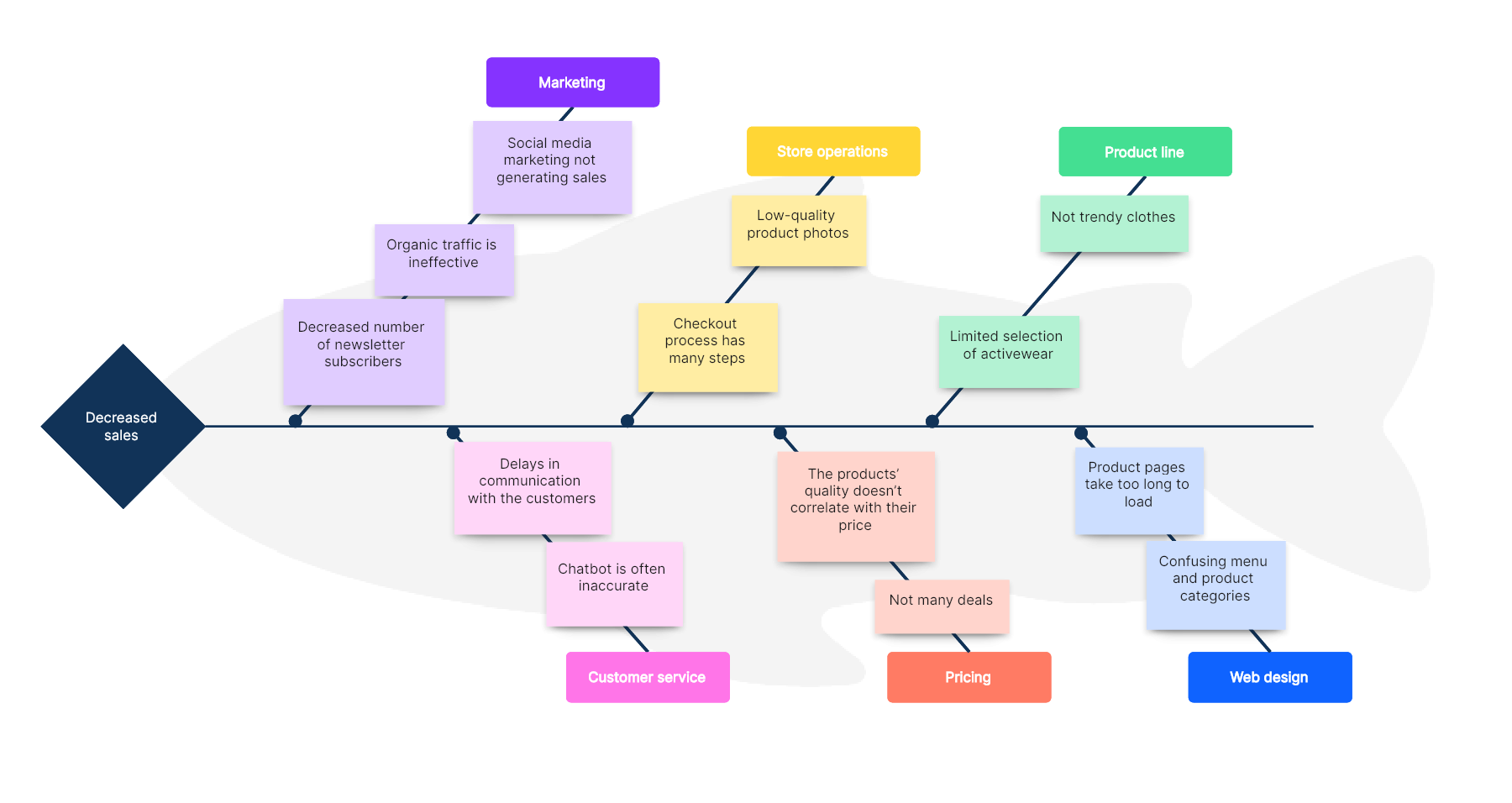
- Marketing
- Social media marketing not generating sales,
- Organic traffic is ineffective,
- Decreased number of newsletter subscribers.
- Store operations
- Low-quality product photos,
- Checkout process has many steps.
- Product line
- Not trendy clothes,
- Limited selection of activewear.
- Customer service
- Chatbot is often inaccurate,
- Delays in communication with the customers.
- Pricing
- Not many deals,
- The products’ quality doesn’t correlate with their price.
- Web design
- Confusing menu and product categories,
- Product pages take too long to load.
Gap Analysis Example 9 - Nadler-Tushman Model
Another gap analysis sample used the Nadler-Tushman model. In this case, we are examining the case of a convenience store that has under-trained staff. This diagram aims to show the leadership why this happens.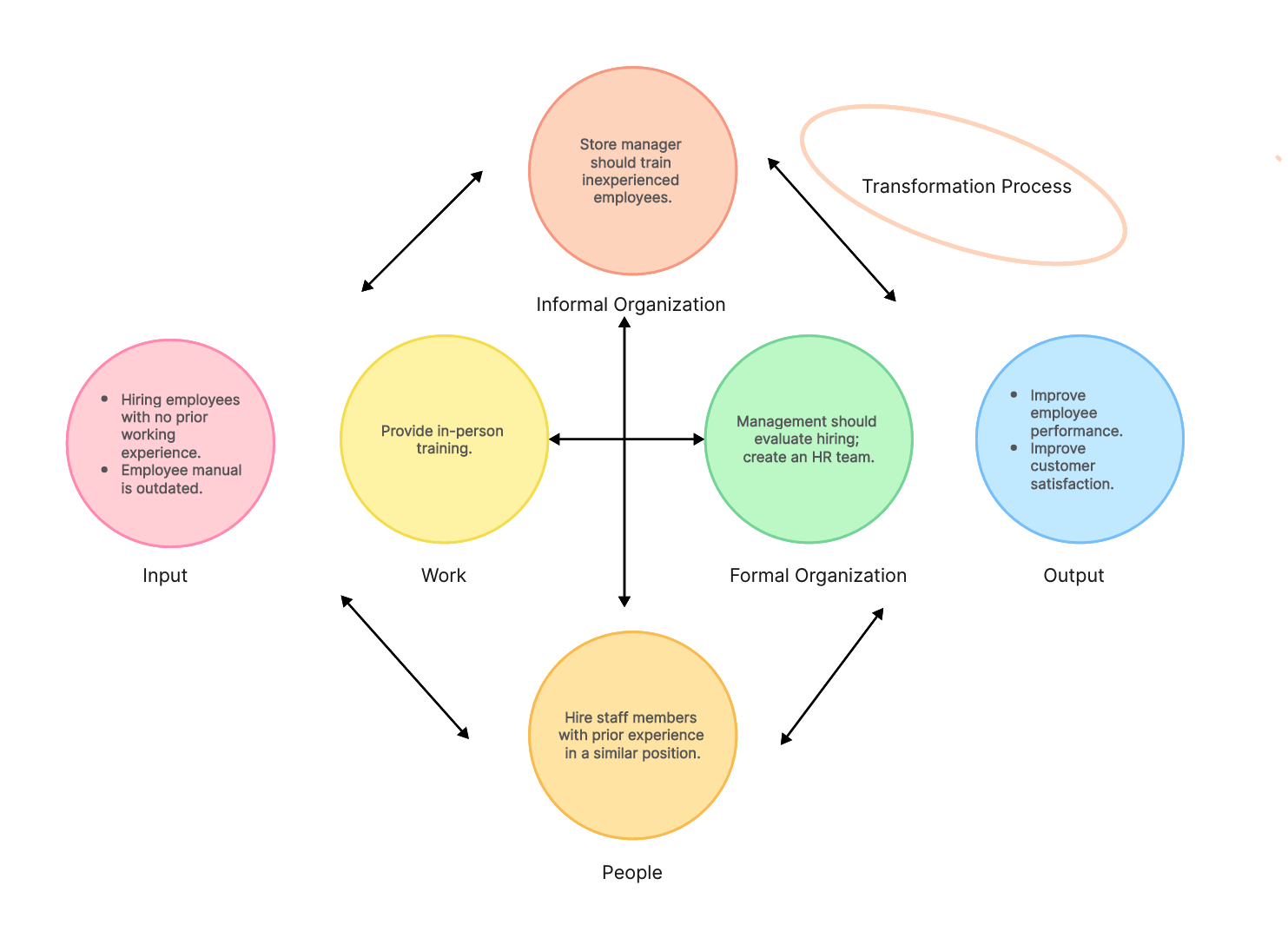
- Input
- Hiring employees with no prior working experience,
- Employee manual is outdated
- Transformation Process
- Work: provide in-person training.
- People: hire staff members with prior experience in a similar position.
- Informal Organization: store manager should train inexperienced employees.
- Formal Organization: management should evaluate hiring; create an HR team.
- Output
- Improve employee performance,
- Improve customer satisfaction.
Gap Analysis Example 10 - Nadler-Tushman Model
The final gap analysis example that uses the Nadler-Tushman model is about a coffee shop that wants to expand its menu to offer more drinks to its customers. In this case, the diagram will look like this: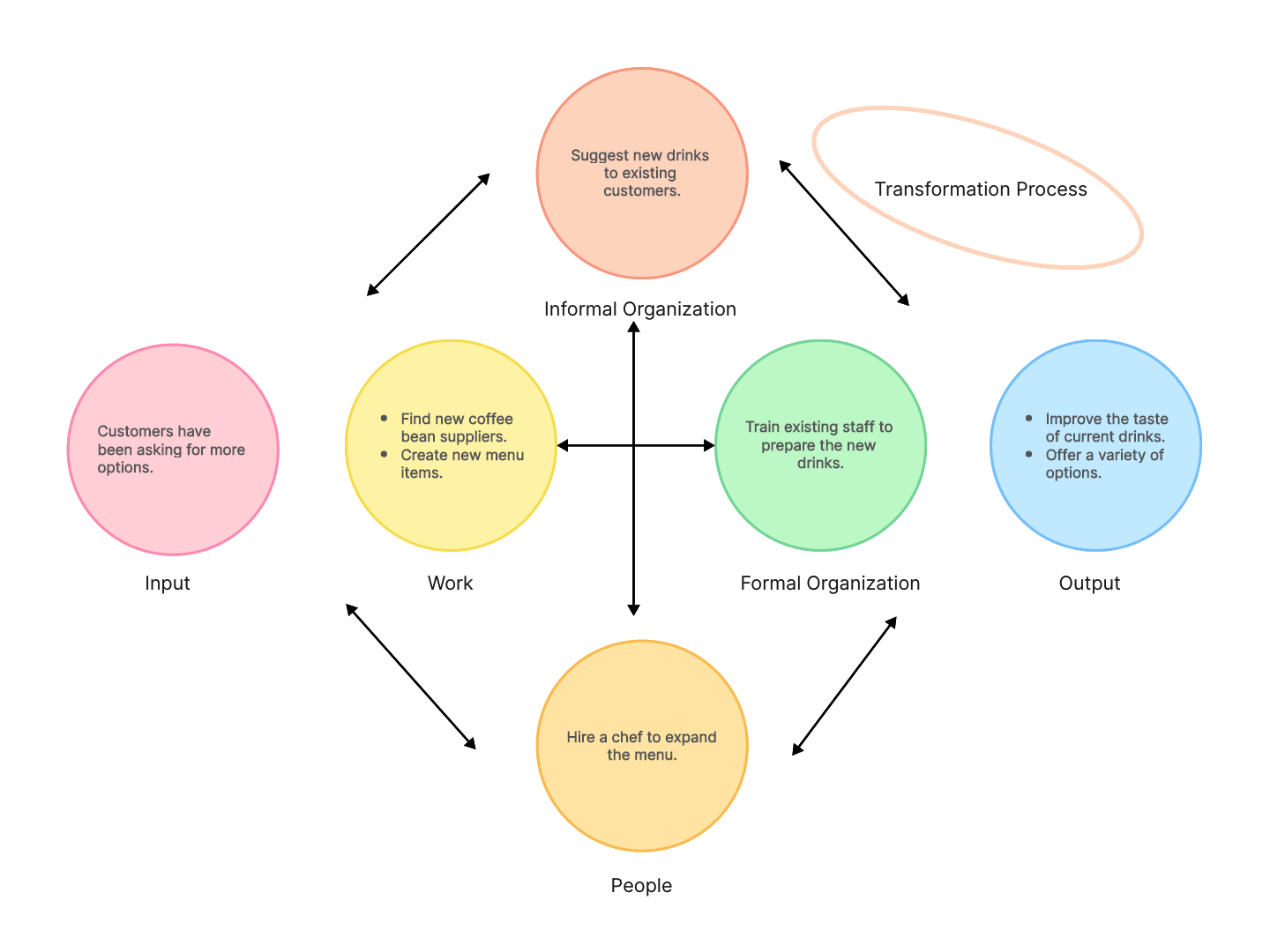
- Input
- Customers have been asking for more options,
- Transformation Process
- Work: find new coffee bean suppliers; create new menu items.
- People: hire a chef to expand the menu.
- Informal Organization: suggest new drinks to existing customers.
- Formal Organization: train existing staff to prepare the new drinks.
- Output
- Improve the taste of current drinks,
- Offer a variety of options.
How to Perform a Gap Analysis
With all the above examples, you are ready to create a gap analysis sample for your company. Here is how to conduct a gap analysis step-by-step:
Step 1 – Decide the area you wish to compare
When you first begin crafting your own gap analysis example, you must first determine the area you wish to analyze. This will help you decide on the best tool to use in order to get the best possible results.
Step 2 – Determine the ideal state
The point of the gap analysis is to uncover how far away you are from the goals you have set. Therefore, it goes without saying that an important step of the analysis is to determine the ideal future state. This will be your guiding light for your future action plan.
Step 3 – Analyze your current state
The next step is to determine where you are right now. You can find this by utilizing one of the tools we have explained earlier in this article.
Step 4 – Make the comparison using the right KPIs
Once you have determined the ideal and your current state, you can start drawing conclusions. The right KPIs will help you evaluate the success of your efforts and identify the areas you are lacking.
Step 5 – Find ways to bridge the gaps
Finally, it is time to forge an action plan that will bring you closer to the ideal state. Of course, it is important to do a gap analysis from time to time to see how you are progressing.
Key Takeaway: Gap Analysis Related Templates and a One-stop Tool
Learning how to use the gap analysis effectively has significant benefits for your business. Fortunately, there is a one-stop tool that allows you to create a gap analysis example with just a few clicks. Boardmix is a must-have collaborative tool that makes diagramming easier than ever before. In the tool’s template library, you will find readymade gap analysis tool templates, including the SWOT and the PEST analysis, the fishbone diagram, and even the Kinsey 7S framework. Create your new Boardmix account for free to gain access to all of its amazing features today!









